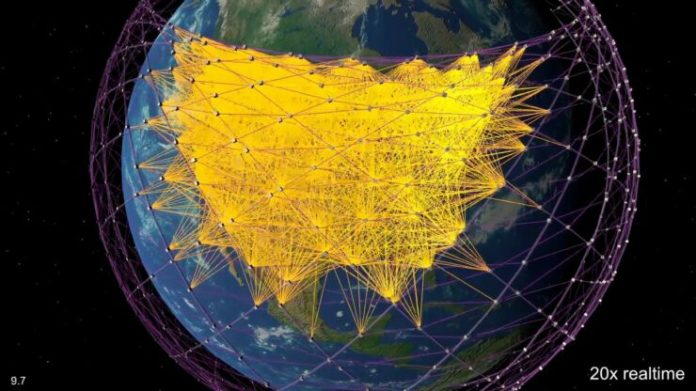Space Exploration Technologies Corp.’s (SpaceX) chief Mr. Elon Musk has revealed that his company’s Starlink satellite internet service will soon be capable of transferring data faster significantly closer to the speed of light. Mr. Musk’s comments were made on the social media platform Twitter, where he shared details about new Starlink satellites, which SpaceX will launch in the next couple of months. These satellites will be equipped with lasers, which are a crucial feature that eliminates the need for Starlink to use ground stations to channel data to internet servers. According to the executive, the new satellites will launch soon and be active by the start of next year.
Starlink Will Be Able To Provide Arctic Regions With Internet Coverage Through New Satellites Outlines Musk
The current Starlink network architecture consists of three elements. These are the user terminal or dish, the orbiting satellites and the ground stations in regions where beta testers are currently using the service. The network works by transmitting the user data to the satellites who relay it to the ground stations for internet connectivity. This is then sent back to the satellites, which then beam it back down to the users.
However, SpaceX has had plans in motion for more than a year to remove Starlink’s reliance on ground stations partially. The company aims to do this by equipping its satellites with lasers that will be capable of transferring data between the spacecraft. This, in turn, will reduce the time the satellites have to spend communicating with the ground stations, and it will also increase coverage as data will be transferred across continents without ‘touching’ the ground.
In his latest tweets, Musk shared a couple of details for these new satellites. These will not be the first ones that SpaceX has launched with lasers. The company has been testing the spacecraft since at least November last year, and it launched another batch in January this year.
According to the SpaceX chief, his company will launch new satellites with laser communication capability in the coming months. His comments followed an earlier response where he outlined that the laser satellites will not require ground stations in countries to provide Starlink connectivity to local users.
Musk stated that the new satellites will nearly cut down Starlink data transfer times in half as the lasers will allow the data to travel at extremely fast speeds.
In his words:
Processing is not an issue. Lasers links alleviate ground station constraints, so data can go from say Sydney to London through space, which is ~40% faster speed of light than fiber & shorter path.
Also, no need for ground stations everywhere. Arctic will have great bandwidth!
02:45 AM · Sep 2, 2021·Twitter for iPhone
While fiber optics are generally thought of as transferring data at lightspeed, the reality is that this speed is different from the one at which light travels in a vacuum. The speed is influenced by a term called ‘refractive index’, which is a ratio of the speed of light to the speed in the material. A high-quality fiber optic cable has a refractive index of roughly 1.44, so the light speed in this cable is 129,166 miles per second.
Using this speed and Musk’s statement that Starlink can transfer data roughly 40% faster than fiber-optic light speed reveals that SpaceX’s internet service can transfer it at 180,832 miles per second. Given that lightspeed in a vacuum is 186,282 miles per second, Starlink’s vacuum data transfer speed equals roughly 97% of lightspeed.
Keeping in tune with its fast-paced environment, SpaceX has moved quickly with the plans to deploy these satellites. Inter-satellite connectivity was first mentioned in Starlink’s plans for second-generation satellites. These satellites, which will number 30,000, will include several upgrades over the currently orbiting spacecraft.
They will have three times the data capacity of the first-generation Starlink satellites, will drop down latencies (the time it takes for a data packet to travel from and back a user) to 50 milliseconds, provide better coverage to polar regions such as the Arctic and Alaska and lower manufacturing costs.
Based on its filings with the Federal Communications Commission (FCC), SpaceX is gearing up to launch more than 1,200 Starlink satellites in the coming months. These launches will come after a pause which, according to company representatives, is due to rocket oxidizer shortages and satellite manufacturing.
– Advertisement –
